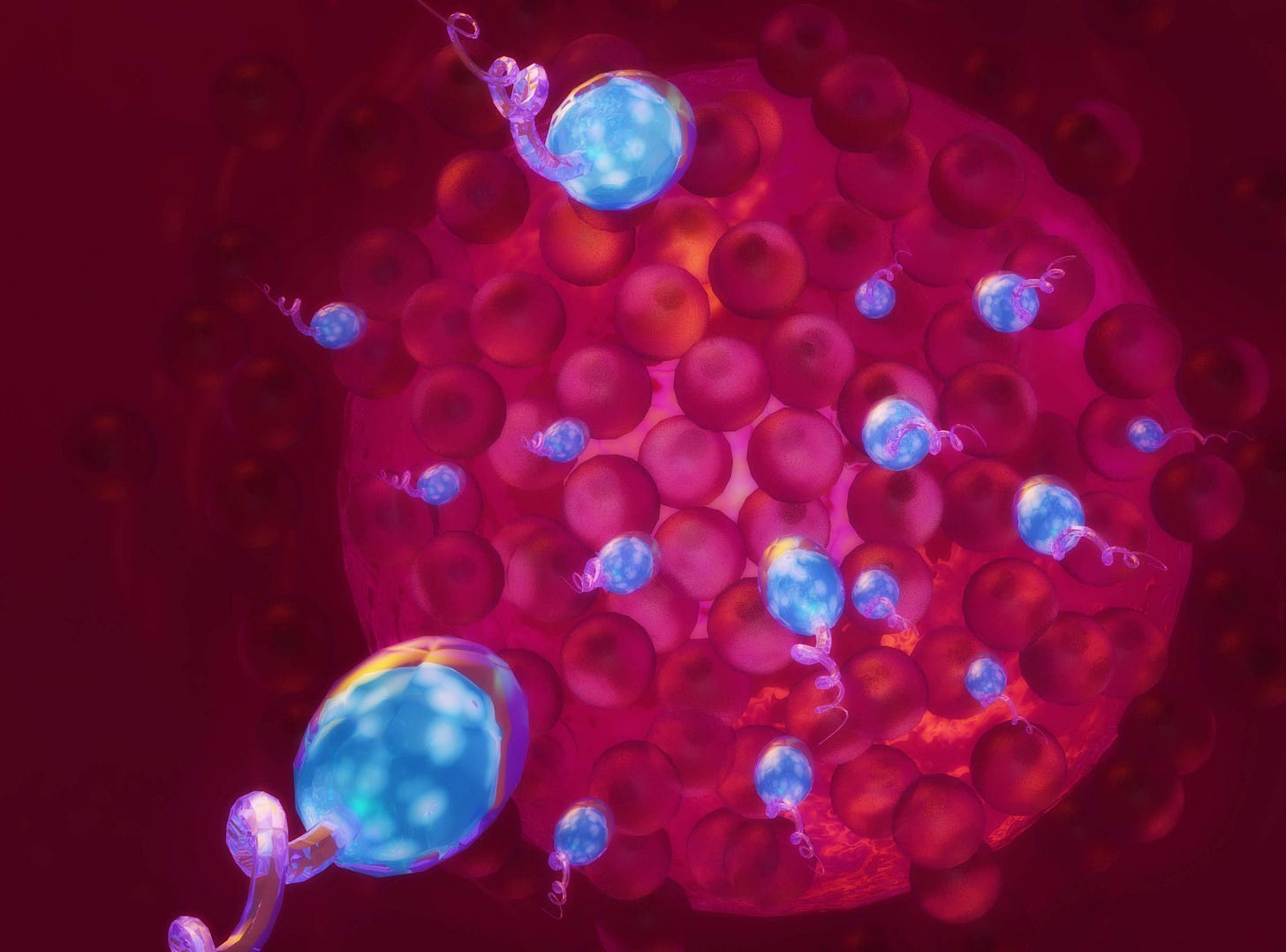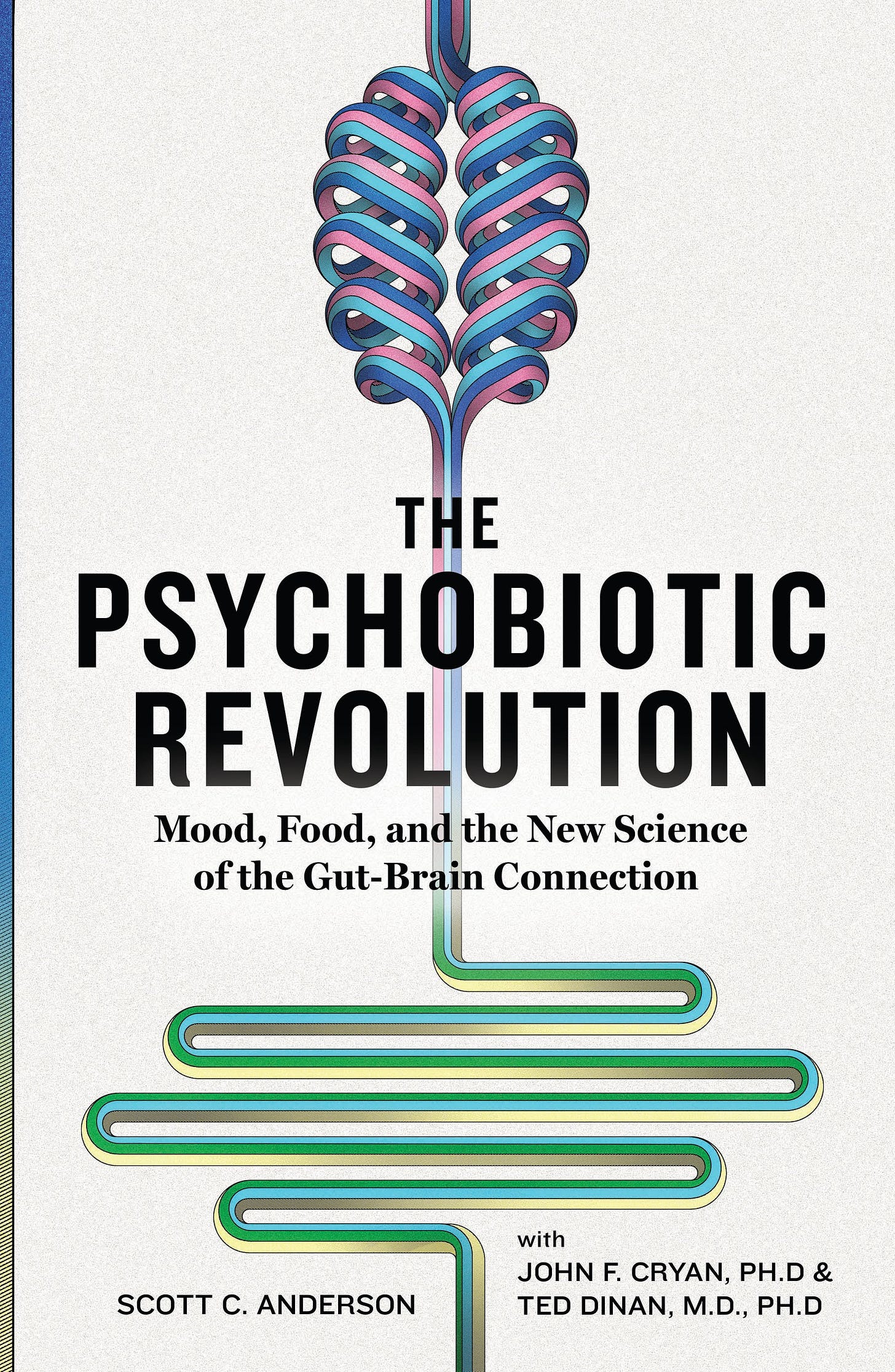The Magic of Ovulation
Microbes play a role even in the earliest stages of ovulation and pregnancy.
The following is adapted from The Psychobiotic Revolution:
“A great adventure is about to begin.” —Winnie the Pooh
A woman is born with hundreds of thousands of eggs, each with their own unique mix of DNA, patched together from genes contributed by each parent. Each of these eggs, once fertilized, can potentially become a baby. A single mother could thus populate a city the size of Berkeley, California, although no mother has yet volunteered for the job. Clearly not all of a woman's eggs are destined to live. If nature is profligate when sowing seed, she is also merciless when pruning.
From a tiny egg
In the ovary, at the beginning of menstruation, a dozen or so eggs start to grow, in anticipation of fertilization. Each egg is swaddled in its own follicle, a structure in the ovary that is a Russian doll of different cell layers, one inside the other. The egg has a kind of translucent shell around it called the zona pellucida. There is also a group of attendants, called cumulus cells, that crowd around the egg like supplicants.
Of this initial batch of eggs, only one will dominate and all the others – each a potential human – will dissolve and be absorbed, a tragedy in miniature. This is merely the first cull of eggs. More rejections will come, although the exact odds of survival are still debated among researchers. If this internal environment is anything like the rest of nature, it could be that only the healthiest egg is being selected, but this part of biology remains an intellectual black hole.
From the moment these eggs start jockeying for position, they secrete estrogen. This is to prime the uterus, just in case a sperm finds its target. But the estrogen also makes its way through the circulatory system to the hypothalamus. This is a section of the brain that is a key component of the gut-brain axis.
The hypothalamus "tastes" your blood and makes some determinations about the level of estrogen. Based on that, it communicates with your pituitary to produce other hormones, like luteinizing hormone (LH).
The estrogen is picked up by your hypothalamus and also by your microbiota. After some four million years of partnership, the mother's body and certain gut bacteria have worked out a way to recycle estrogen. A dysbiotic gut may not respond properly to the estrogen, which may lead to problems down the road, including cancer.
The egg takes over
Over the next five days, the selected follicle goes into overdrive, growing and swelling with fluids. At the same time, it puts out another surge of estrogen, once again driving the hypothalamus to secrete more hormones into the bloodstream. The tiny egg, with impressive leverage, is masterminding a complete overhaul of the mother's endocrine system.
At some point, these hormones start to affect the microbiota of the vagina. It starts to favor lactobacillus species, and the pH starts to dip as lactic acid is produced. This is one of the first stages of the maternal microbial preparation. The drive to properly pass down your mother's microbial inheritance has begun in earnest.
The ovary, meanwhile, is bulging with the selected follicle. In a feedback loop, the LH that the pituitary secreted causes the egg to burst out of it follicle where, alarmingly, it finds itself floating freely in the mother's abdomen. Fortunately for the drifting egg, fingerlike projections from the nearby fallopian tubes fan the area to sweep up the tiny ovum. If all goes well, the egg is gently ushered into the fallopian tube. There, both cilia and peristaltic motion push the egg down the tube and toward the uterus. It has only a day or so to find a mate, or it will be shed, along with the special uterine lining that was set up to receive it.
Sperm makes a brief entrance
In the middle of this byzantine plumbing – if all goes well – a sperm cell will show up.
Let’s talk about dad for a moment. Although he only gets a cameo in this story, his sperm comes with an entourage. Like pretty much everything in this story, sperm cells hang out with bacteria. Seminal fluid turns out to be ideal culture media. It has a fairly neutral pH and it's chock full of carbs. Bacteria love it, and sperm splash around in the same fluid.
It's an open question whether these bacteria ever contribute to the baby's microbiota, but this would clearly be an ideal way to mix things up. There is telling evidence of a connection between the seminal microbiota and the vaginal microbiota of sexually active couples. Some sort of accommodation may be forged between long-term lovers, representing a higher level of microbial mixing than normally appreciated. This particular microbiota, it would seem, belongs to two people, not just one.
Dad may play a small role, but it's a unique one, and not always positive: a stressed dad can pass on his stress response to his children, and possibly his grandchildren as well.
Men make billions of sperm every day, and so they can incorporate environmental changes in each fresh batch. Women's eggs are pre-formed at birth, so they are more sheltered from the vagaries of life. In this way, nature makes the mother the keeper of hard inheritance and gives the father the chance to introduce something novel, something relevant to changes in the environment.
Before we get too enthused about dad's impact we need to remember that mom will be housing the entire baby project and can respond to environmental challenges at all points during the pregnancy, not just during the brief encounter with some lucky sperm. Still, give dad his due.
How are these environmental contributions passed on? It's all accomplished by the amazing power of epigenetics. In the next section, we’ll get in to this fascinating topic.
Aagaard, Kjersti, Jun Ma, Kathleen M. Antony, Radhika Ganu, Joseph Petrosino, and James Versalovic. “The Placenta Harbors a Unique Microbiome.” Science Translational Medicine 6, no. 237 (May 21, 2014): 237ra65. doi:10.1126/scitranslmed.3008599.
Javurek, Angela B., William G. Spollen, Amber M. Mann Ali, Sarah A. Johnson, Dennis B. Lubahn, Nathan J. Bivens, Karen H. Bromert, Mark R. Ellersieck, Scott A. Givan, and Cheryl S. Rosenfeld. “Discovery of a Novel Seminal Fluid Microbiome and Influence of Estrogen Receptor Alpha Genetic Status.” Scientific Reports 6 (March 14, 2016): 23027. doi:10.1038/srep23027.
Mändar, Reet, Margus Punab, Natalja Borovkova, Eleri Lapp, Riinu Kiiker, Paul Korrovits, Andres Metspalu, et al. “Complementary Seminovaginal Microbiome in Couples.” Research in Microbiology 166, no. 5 (June 2015): 440–47. doi:10.1016/j.resmic.2015.03.009.
Sharma, Upasna, and Oliver J. Rando. “Father-Son Chats: Inheriting Stress through Sperm RNA.” Cell Metabolism 19, no. 6 (June 3, 2014): 894–95. doi:10.1016/j.cmet.2014.05.015.
This is the bestselling book I wrote with the top two scientists in the field: John F. Cryan and Ted Dinan. They are simply brilliant, and are changing the world one psyche at a time! From National Geographic.




The whole process is incredible, Stéphanie! And we're just at the beginning of our explorations. Can't wait to see where this goes!
Such a great post. I didn't know about this part: This particular microbiota, it would seem, belongs to two people, not just one. Never really thought about that, this is so interesting.